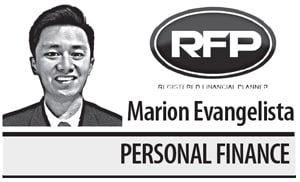
Successful people start and fail early. This is a statement that rings true especially in personal finance. Since financial literacy isn’t a common topic in schools, offices, or even among friends, it’s no surprise that many are confused or just follow what they know on instinct.
How to change this trend? Because of their open and curious minds, let’s start with our children.
Primary school children
At this stage, children tend to read and watch a lot. This is a great opportunity to show our child how money works through published or online content. Even without cable TV, we can watch Bloomberg or cnbc shows through YouTube. The key here is for parents to have time to be near their children while they read or watch.
Although most of us are already familiar with this suggestion, there are two ways to take this approach to the next level.
First, ask your child to report what he saw. cnbc offers rich 15-30 minute videos on topics related to recent business and investment news. Although terms such as inflation, exchange rate and interest rates may seem daunting, we have to start somewhere. Ask the child to speak as if he were a teacher lecturing you. As the child introduces himself, don’t be afraid to ask clarifying questions to test the child’s understanding.
Second, never end a lecture without establishing the “What’s in it for me?” It’s one thing to know the definition of a term, but quite another to learn its application. If the child talks about currency and its effects, you may want to ask about its impact on suppliers and consumers.
Elementary school children are observant. At this point, they see and appreciate the identity of his family. Does family value education, relationships or money? Money is not bad because it allows us to buy what we need to survive. Parents need to take time at the family table to talk openly about money. Explain why the family sets aside a certain amount each month for a goal and why it is important to invest regularly.
When you’re stuck in traffic with nothing to say, try to catch the news that impacts business or investments. Even a mundane radio commercial will contain a lesson or two from a financial standpoint. Ask your child for their thoughts on how a newly launched product can affect a company’s revenue.
Children in high school
WITH the right foundations in place, get your child to start managing their money. High school students tend to want to own a gadget. These, of course, must be purchased. Create an agreement with your child to split their cost. It’s about instilling responsibility. As in all adult companies, there is no free lunch. To save, the child will have to minimize the purchase of excessive food in the canteen.
Thinking back to our youth, most of us are already familiar with the concept of savings. To take it to the next level, I suggest exposing the child to investments. While it is true that a minor may not be able to open a unitary investment fund or mutual fund account at this time, ask your child to act as “secretary” and ” treasurer “. As “secretary”, the child will have to tell you the market value of your mutual funds twice a week. Trust your login credentials so your child can access accounts on your behalf.
As “treasurer”, your child will be responsible for subscribing or redeeming shares or units in your mutual fund. At first, sit next to your child to make sure the correct steps are being followed. Due to exposure to computers and social media, most children will only get the process after one or two tries.
These steps will make the child realize that you are someone who values investment in achieving personal and family goals.
Children in college
This is where the reality of life will make itself known. A child in college will see the competition in the job market and the other intricacies of adulthood.
As secretary and treasurer for years, the child will easily see the need to prepare financially. Have your child write down their personal goals and the investment horizon for each. Post it in a prominent place. Remind your child that part of their allowance will need to be used for investment.
Then apply the “matching principle”. Match the investment product with the time horizon. Money market and intermediate fixed income for the short term, balanced fund for medium term goals and equities for the long term.
If the child is under the legal age, open an investment account in their name first.
To take it to the next level, you may want your child to be exposed to global investing from an early age. There are platforms that will allow your child to buy US stocks. Another option is for your child to access foster funds. It is best to consult a financial planner to have a well-designed portfolio for optimal returns.
As parents, we all want the best for our children. Learning about personal finance at an early stage will help assure our children that they can stand tall with confidence.
Marion Evangelista, RFP CTEP CTA is a Registered Financial Planner of RFP Philippines. To learn more about personal financial planning, attend the 99th RFP program in January 2023. To inquire, email [email protected] or text at 0917-6248110.
